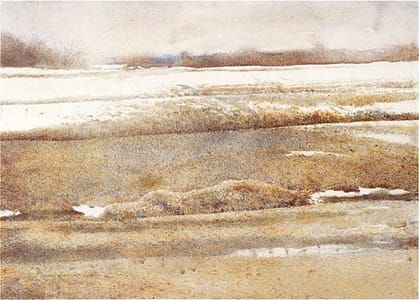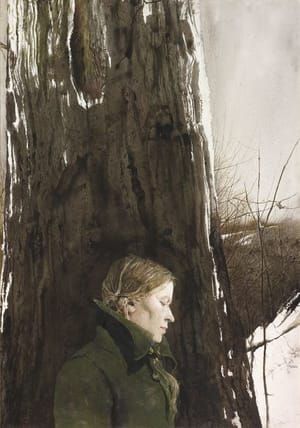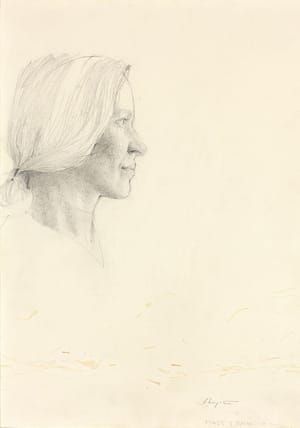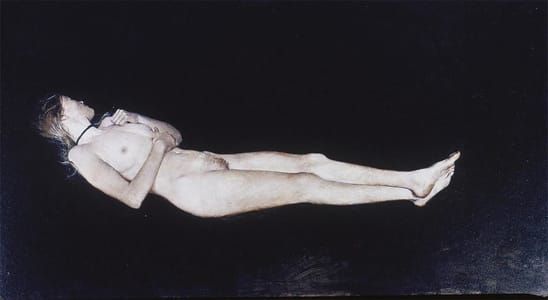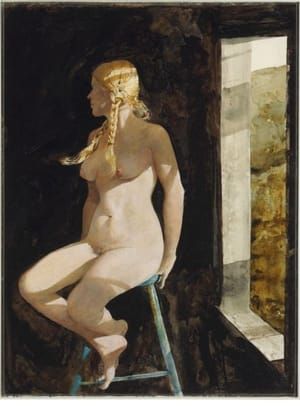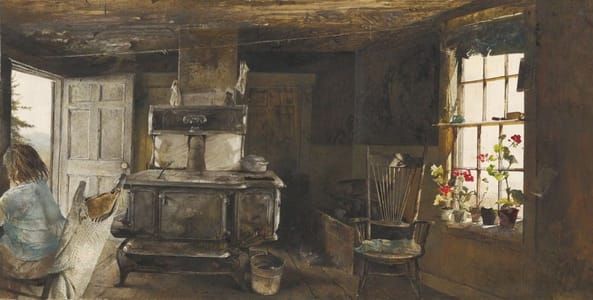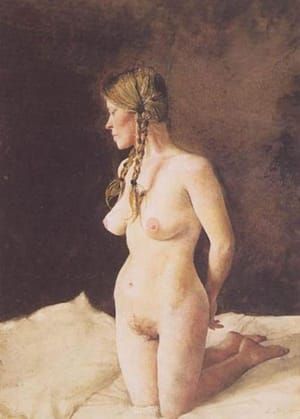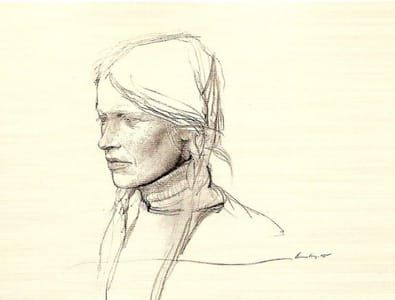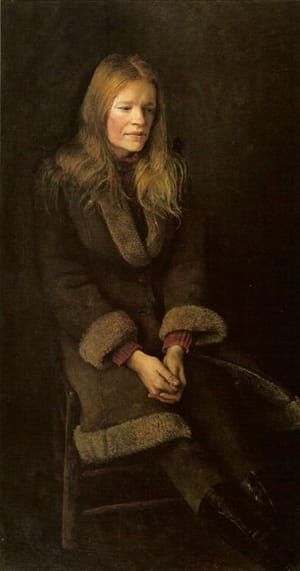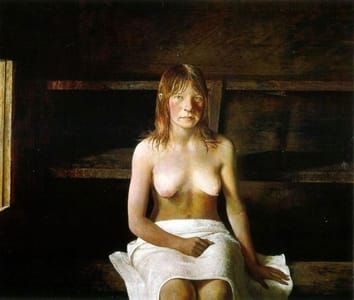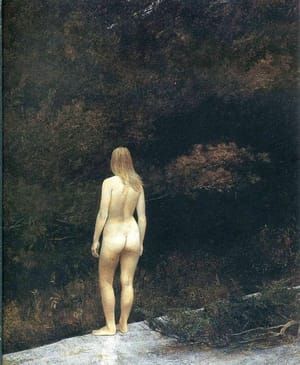
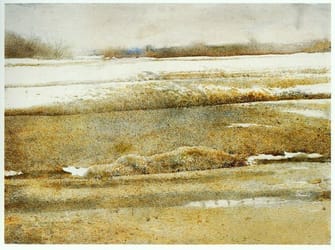
Hoar Frost, 1995
Andrew Wyeth
A watercolor with areas of drybrush.
Drybrush – a watercolor technique explored by Andrew Wyeth
By Peter V. Nielsen
The American painter Andrew Wyeth divides his watercolors into plain watercolors and drybrush. He may start a painting as a watercolor, but during the process some of the paintings will change partly or fully to what he calls a drybrush. The drybrush technique is unique with a beautiful expression. It can be an inspiration for other watercolor painters as described in the following text....
Andrew Wyeth paints in both egg tempera and watercolor. His egg tempera technique is very detailed with rendering of tiny elements as for example the grass field in “Christina’s World”. It is the egg tempera technique, a technique where an initial wash is covered with the structure of woven dots and lines in different related or opposite colors, which is reflected in the watercolor drybrush technique.
In an interview Andrew Wyeth said to Thomas Hoving: I work in drybrush when my emotion gets deep enough into a subject. So I paint with a smaller brush, dip it into color, splay the brush and bristles, squeeze out a good deal of the moisture and color with my fingers so there is only a very small amount of paint left. Then when I stroke the paper with the dried brush, it will make various distinct strokes at once, and I start to develop the forms of whatever object it is until they start to have real body…. Drybrush is layer upon layer. It is what you call a definite weaving process. You weave the layers of dry brush over and within the broad washes of watercolor. Andrew Wyeth’s curator Mary Landa has told that in some situations he use a special prepared brush with a tip which consists of down to one sable hair.
Meryman writes in general on Andrew Wyeth’s technique: Every watercolor has been like a battle, the outcome constantly in doubt. His breath fast, talking to himself, the glasses he wears paint-splattered with color, he attacks the paper with a frenzy, scratching it with the end of his brush, scraping it with a razor blade, dapping at it with Kleenex. Andrew Wyeth explains in an interview to the Greenville County Museum of Art: I work with impulsiveness. I use eleven kinds of brushes, camel hair or sable or an old house painter's brush. Sometimes a scrub brush. I've torn pictures in half trying to get into them, to get structure and weight and form and succulence and passion.
...“Hoar Frost” is a relatively new painting made in 1995. It shows the fields outside the artist’s home in Chadds Ford with wheel tracks made in the frozen ground. The painting is very suppressing in its expression, with a wonderful blue burst in the horizon. Large parts of the painting are made as a drybrush, and it is a good example of the use of drybrush to create surface and structure. The section shows how a weak blue and brown wash is covered by small lines in brown and blue to create the suggestion of a frozen surface. It is not the intention to depict the grass in details as pointed out by Venn4 but only to give a suggestion of the field. “Last Light” 1988 and “Cold Spring” 1988 are other examples of the use of drybrush for expression of a surface in different related colors.
It should be emphasized that it is necessary to study the actual paintings to enjoy the details in the drybrush technique. Books with watercolors can have a high quality but it is not possible to show the technique in a reduced scale, and it is not possible to express the texture of the surface in an acceptable way.
This text has discussed the different techniques in a very separating way, but it is important to realize that Andrew Wyeths interest in technique is only the question of whether or not it can express his feelings and need at a particular moment. The technique is always put in the service of visual experience, not of mere effect.
(http://www.petervnielsen.dk/Drybrush_Andrew_Wyeth.shtml)
22 x 30 in
Uploaded on Jul 18, 2017 by Suzan Hamer
Andrew Wyeth
artistArthur
Wait what?
